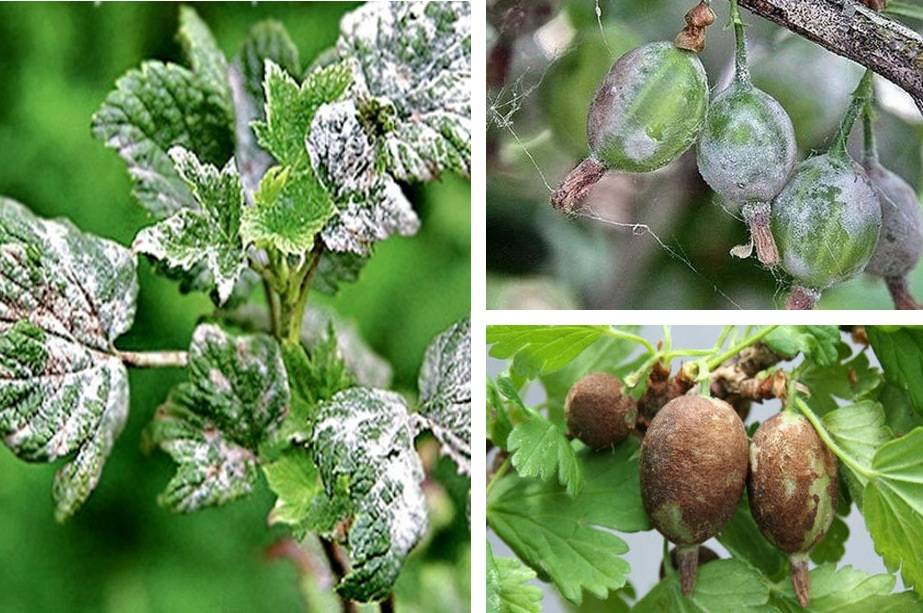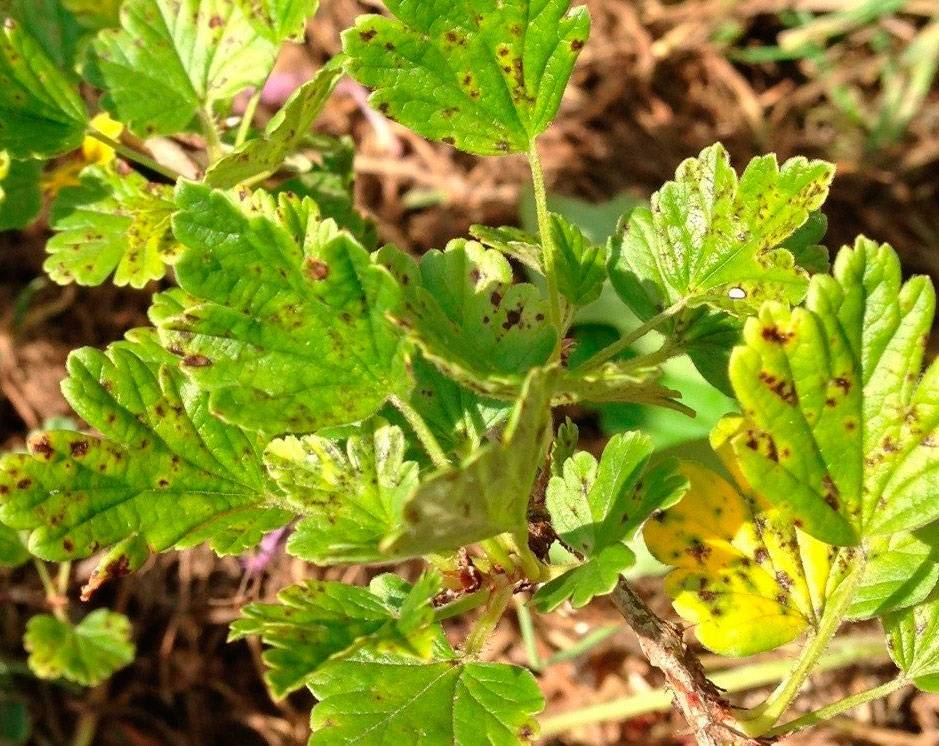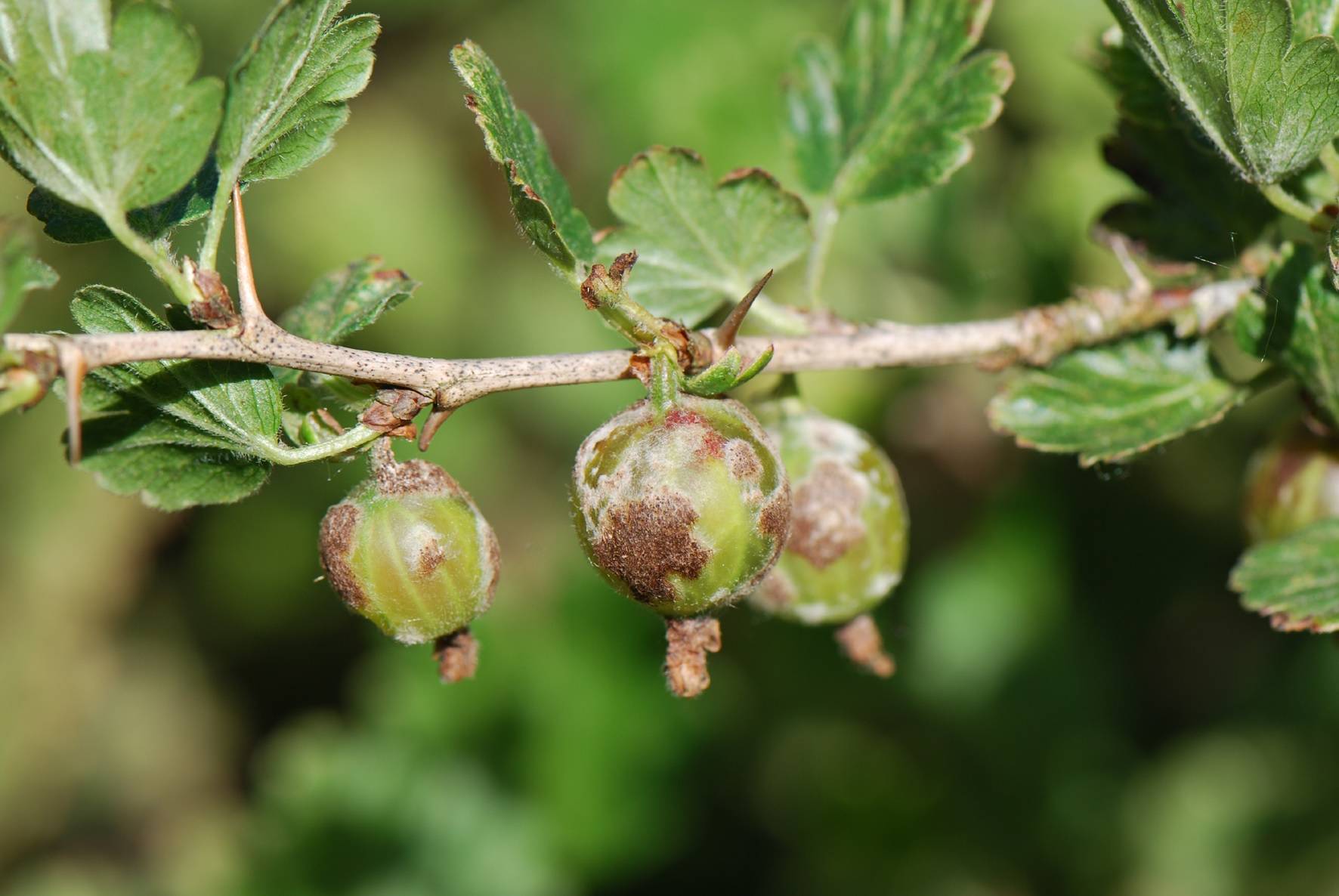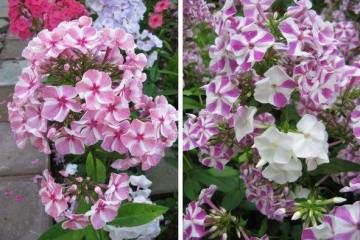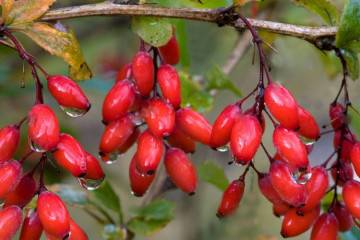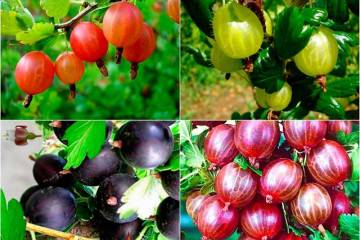Gooseberry diseases and their treatment
Content:
Gooseberries are prone to infection with various diseases just like any other cultivated plants. It is important for gardeners to know the descriptions of gooseberry diseases, which are very similar to those that affect currants, in order to take timely measures. Infection of a shrub can lead not only to a loss of yield, but also to the complete death of a shrub.
Symptoms indicating that the plant is sick
Gooseberry disease manifests itself in various symptoms. You can determine that a plant is infected by the following signs:
- white bloom appears on the leaves;
- foliage turns yellow, curls and dries completely;
- the appearance of gray spots on the bush;
- growth stops, yield decreases;
- the fruits are covered with a brown bloom, or turn black;
- the berries dry up and fall off.
Methods for the treatment of major diseases of the bush
In the garden, even one diseased bush is dangerous. Infection can spread very rapidly to all other crops. Treatment should be started immediately after the first signs appear.
Gooseberry anthracnose
Anthracnose is a type of fungal disease. It infects gooseberry leaves. The disease can be distinguished by bright brown spots that resemble burns. At the initial stage, it forms small specks, which later spread out and form one large spot. The leaves dry out and begin to fall off.
Young shoots of the affected plant do not grow and develop well. The fruits become savory.
As therapeutic measures, you can use:
- Collect and burn all fallen leaves. This is important as there may be fungal spores on the surface of the earth.
- At the initial stage of the disease, tear off the affected leaves to prevent further spread.
- Spray the plant with a solution of copper sulfate. It is bred at the rate of 40 g per bucket of water.
If the disease is running, you can treat it with a solution of soda and laundry soap. Spraying is carried out before the gooseberry begins to bloom, as well as after harvesting.
White spot or septoria
Gooseberry septoria is a fungal disease that begins to develop on the plant in early summer. The first symptoms are black and brown spots with a red border. Affected foliage dries up, then falls off. The buds on diseased branches do not bloom in the spring. Fungal spores do not die even at low temperatures. In winter, it stays in the bark.
Septoria control measures are similar to anthracnose treatment. Additionally, you can use fertilizers for plants with a high content of zinc, copper, manganese and boron.
Gooseberry mosaic
If the gooseberry leaves turn yellow, this indicates a mosaic infection. This problem is exclusively a feature of the gooseberry; it does not manifest itself in any other culture. The disease is caused by a virus that lives in the body of sucking insects. A gardener can infect a shrub himself when pruning a plant through tools.
The first symptoms of the disease are:
- the appearance of a yellow pattern on the leaves;
- the growth of new shoots stops;
- yield decreases;
- leaves shriveled.
There are no cures. The infected leaf is dug up and burned. The only thing that can be done is to prevent the appearance of the mosaic by using preventive measures. To do this, you need to regularly process gooseberries from pests, carefully examine the shrubs.
Goblet rust
The cause of the appearance of rust on the plant is a fungus. It reproduces in fallen leaves, tolerates low temperatures well, does not die in winter. In the spring, his spores spread and fall on the bush. Gooseberry rust is the reason why gooseberries drop berries without ripening.
Pathology can be seen in the spring by the formed yellow or orange spots on the leaves. A bulge appears on the foliage below, which increases in size over time. Visually, it resembles a glass. That is why the disease is so named. The bulge contains fungal spores. If you touch it, they will scatter throughout the area and infect healthy shrubs.
You can cure the plant by spraying it with Bordeaux 1% liquid. This must be done three times per season:
- during bud break;
- after flowering is complete;
- two weeks after the last treatment.
Before and after flowering, Fitosporin-M can be used. It will help increase the plant's immunity.
Scab
Gardeners may face such a symptom, when the gooseberry berries seem to be boiled, what kind of disease causes this phenomenon and how to deal with it? This is the development of scab caused by fungi. There are many reasons for the development of the disease:
- too strong pruning of the bush;
- excess nitrogen in the soil;
- oversaturation with moisture.
Symptoms appear on the leaves. They begin to become covered with spots, which further increase in size. Then the symptoms appear on the berries. At the last stage of the disease, the growth of shoots stops.
For treatment, you can use folk and chemical methods. Chemical control agents include:
- Copper sulfate treatment. To prepare the product, you will need 75 gr. laundry soap, 5 liters of water and 20 gr. copper sulfate. Processing is carried out until the flowering of the plant.
- Spraying with Bordeaux liquid.
It is necessary to treat the plant with folk methods at the initial stage of the development of the disease. One of the most effective methods is to prepare a mullein solution. It is diluted with water in a 1: 3 ratio. The solution is sprayed on the bush.
Mold
It is the formation of mold that is the reason why the berries crumble from the gooseberries. This is due to the appearance of the following diseases:
- gray rot;
- powdery mildew;
- goblet rust.
If infected with gray mold, the berries can turn white and start to rot. Knowing how to deal with gooseberry gray mold can save the plant. Spraying with a 3% solution of copper sulfate, timely removal of dried leaves and berries, and soda treatment helps.
Verticillary wilting
This disease is classified as fungal. It affects the vessels of the branches and the root system. Due to the mycelium, they become clogged. Nutrients in the required volume cease to flow to the shrub. The leaves begin to turn yellow. Gooseberry branches stop growing, start to blush, then dry out completely.
A distinctive feature of the disease is a brown ring, which is noticeable on the cut of the shoots. The mycelium actively develops in hot weather and leads to rotting of the roots.
In order to prevent the development of the disease, it is recommended to provide proper plant care. When cutting a shrub, the places of the cuts must be treated with Bordeaux liquid.
Spheroteka
Powdery mildew or spheroteka is one of the most dangerous diseases for gooseberries.This is a fungal infection that begins to show in June. Shoots, leaves and berries are primarily affected. At first, they are covered with a white bloom, which later begins to turn gray. In the last stage, the plaque becomes blackened and very dense. Spores of the fungus are easily carried by the wind to other crops.
The leaves of the bush dry up, curl. The plant stops growing, the fruits crack and fall off. If you do not take action, the plant will quickly die. If the lesion is weak, you can treat it with an infusion of ash.
Basic rules of prevention
Regular preventive measures will help prevent the onset of the disease. Proper care is as follows:
- Disease resistant varieties are recommended.
- When planting, it is important to observe the distance between the bushes. This is necessary for each plant to have enough nutrients.
- Make regular feeding.
- Loosen the soil after each watering.
- Prune in spring and fall.
- Cut off dried shoots, burn fallen leaves.
- Before opening the kidneys, treat with boiling water.
- Process gooseberries with Bordeaux liquid.
A good preventive measure would be planting dill and garlic next to gooseberries. They repel pests that can become carriers of the disease.
Knowing the symptoms of diseases affecting the plant, gardeners can easily determine how to spray gooseberries. If you start treatment in a timely manner, you can save not only the crop, but also the bush itself.
